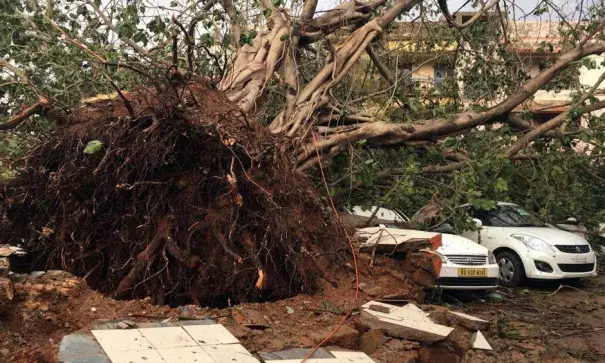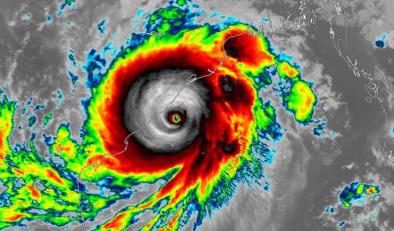Cyclone hits Bangladesh after battering India, mass evacuations save lives

The strongest cyclone to hit India in five years killed at least 12 people in eastern Odisha state before swinging north-eastwards into Bangladesh on Saturday where five more people died and more than a million were moved to safety.
Tropical cyclone Fani, which made landfall early on Friday, lost some of its power and was downgraded to a ‘Depression’ by the India Meteorological Department on Saturday as the storm hovered over Bangladesh.
“The fear of a major disaster is mostly over as (Fani) has weakened,” Shamsuddin Ahmed, director of the Bangladesh Meteorological Department, told reporters.
A storm surge still breached embankments to submerge dozens of villages on Bangladesh’s low-lying coast, a disaster ministry official in Dhaka said.
The storm also destroyed several houses in the Noakhali district, where a two-year-old child and a 12-year-old girl were killed and about 30 people were injured, local official Tanmoy Das told Reuters.
In all at least five people had been killed, 63 injured, and more than the 1,000 houses had been damaged, Bangladeshi authorities said.
...
At least six people died in Bhubaneswar, Odisha’s state capital, where fallen trees blocked roads and electricity supply was hit.
...
In 1999, a super-cyclone battered the coast of Odisha for 30 hours, killing 10,000 people.
Since then, technological advances have helped weather forecasters track the cyclones more accurately, giving authorities more time to prepare, and a mass evacuation of nearly a million people saved thousands of lives in 2013.
This time, as cyclone Fani approached, Odisha moved 1.2 million people to safety in 24 hours, which Patnaik described as “one of the biggest human evacuations in history”.



